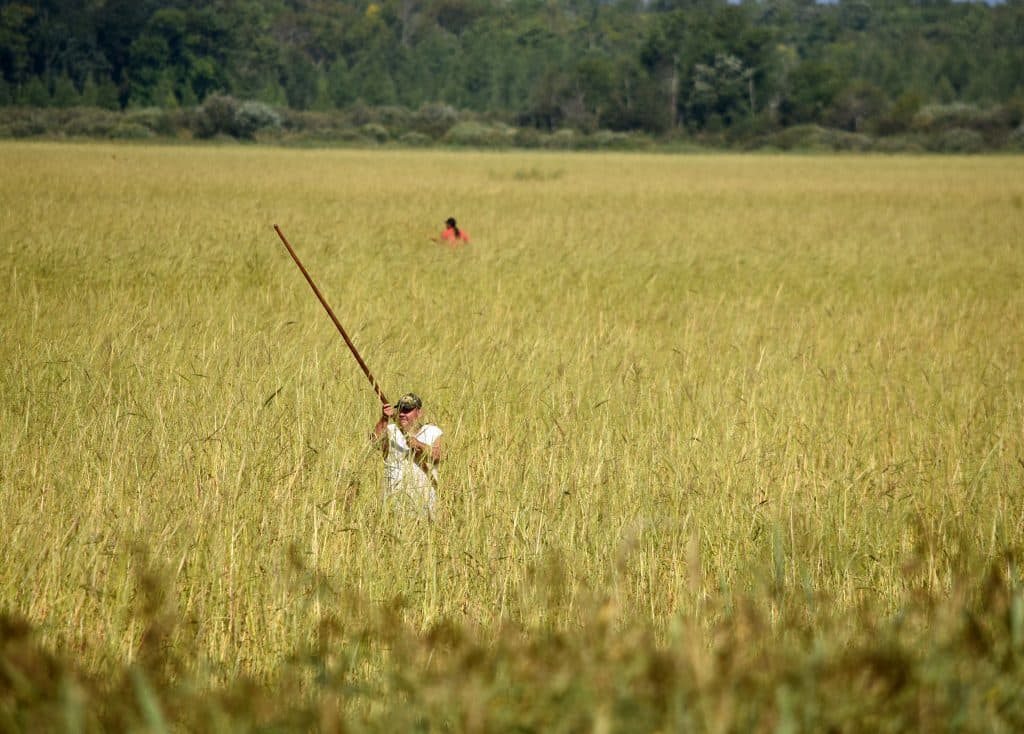
There would no longer be a simple numerical standard for how much sulfate is safe to discharge into wild rice waters, based on a new proposal from the Minnesota Pollution Control Agency. The agency is recommending a change in the 44-year-old rule that would replace a flat limit with a formula.
The proposed rule is available for public review and comment until November 9.
The shift in the regulatory strategy reflects the mining industry’s legal and legislative challenges to the rule, Ojibwe people’s wish to protect manoomin, a valuable food source and cultural icon, and environmentalists’ efforts to preserve a healthy ecosystem — including naturally-growing stands of the official state grain of Minnesota.
It also recognizes that, while sulfate certainly impedes wild rice growth, other factors that vary between lakes and watersheds play a significant role in how much is too much for rice to survive.
Scientists have been working for years to understand the complicated connections between the contaminant found in wastewater from both iron and copper-nickel mines, as well as from municipal treatment facilities, and other chemical and physical forces.
Peer-reviewed research at the University of Minnesota-Duluth by longtime wild rice scientist John Pastor published in the journal Ecological Applications suggested 50 milligrams per liter was when sulfate becomes harmful to rice, equal to five copper pennies in a bin of 100,000 cents. It’s five times the standard set in 1973.
Yet that nice even number does not tell the whole story.
In a 2014 article, Wilderness News writer Alissa Johnson explained how the state was studying the sulfate standard, and the difficulty of figuring out the role of iron in the interaction between sulfate and rice.
Lakes with higher levels of iron showed lower levels of sulfide, the chemical created from sulfate and which actually harms the rice, because the dissolved form of sulfide can be turned into a solid by iron, mitigating its harm to plants.
“We believe that the precipitated [or solid] iron sulfide is not toxic to wild rice,” MPCA scientist Ed Swain said. “If there is enough iron in the sediment, it immediately precipitates it or turns it into a solid.”
Carbon also plays a role. It feeds bacteria, which convert sulfate to sulfide. More carbon in the sediments can mean more harmful sulfide.
That is part of the reason for the new formula the state has proposed. It would calculate the appropriate amount of sulfate discharge based on the levels of iron in downstream waters, as well as other factors.
Ultimately, the standard calls for a maximum of 120 mg of sulfide in the mud where wild rice grows its roots. This would be a shift from regulating the amount of sulfate in industrial discharges.
The proposal also includes a list of 1,300 lakes, rivers and wetlands that are known to be home to wild rice in Minnesota, and a process for adding or removing waters from designation.
Ojibwe officials objected to the proposed rule’s designation of wild rice waters, saying it was an incomplete list.
Excluding a waterbody from designation would mean the sulfate standard would not be enforced on any source upstream of it.
“They are discounting hundreds of water bodies that had been identified by the Department of Natural Resources as wild rice waters in a previous legislative-directed study on wild rice waters in Minnesota,” Nancy Schuldt, water projects coordinator for the Fond du Lac Band of Lake Superior Chippewa, told Minnesota Public Radio news.
Public comments can be submitted online, by mail, and in person. Several hearings will be held in late October and early November. Visit the MPCA website for more information.

